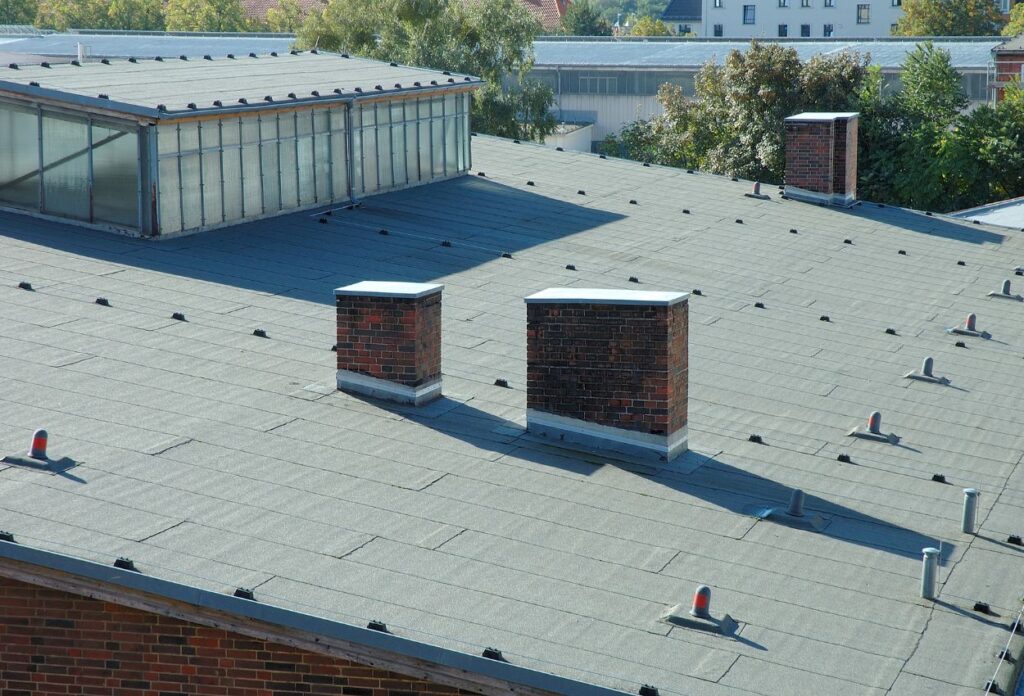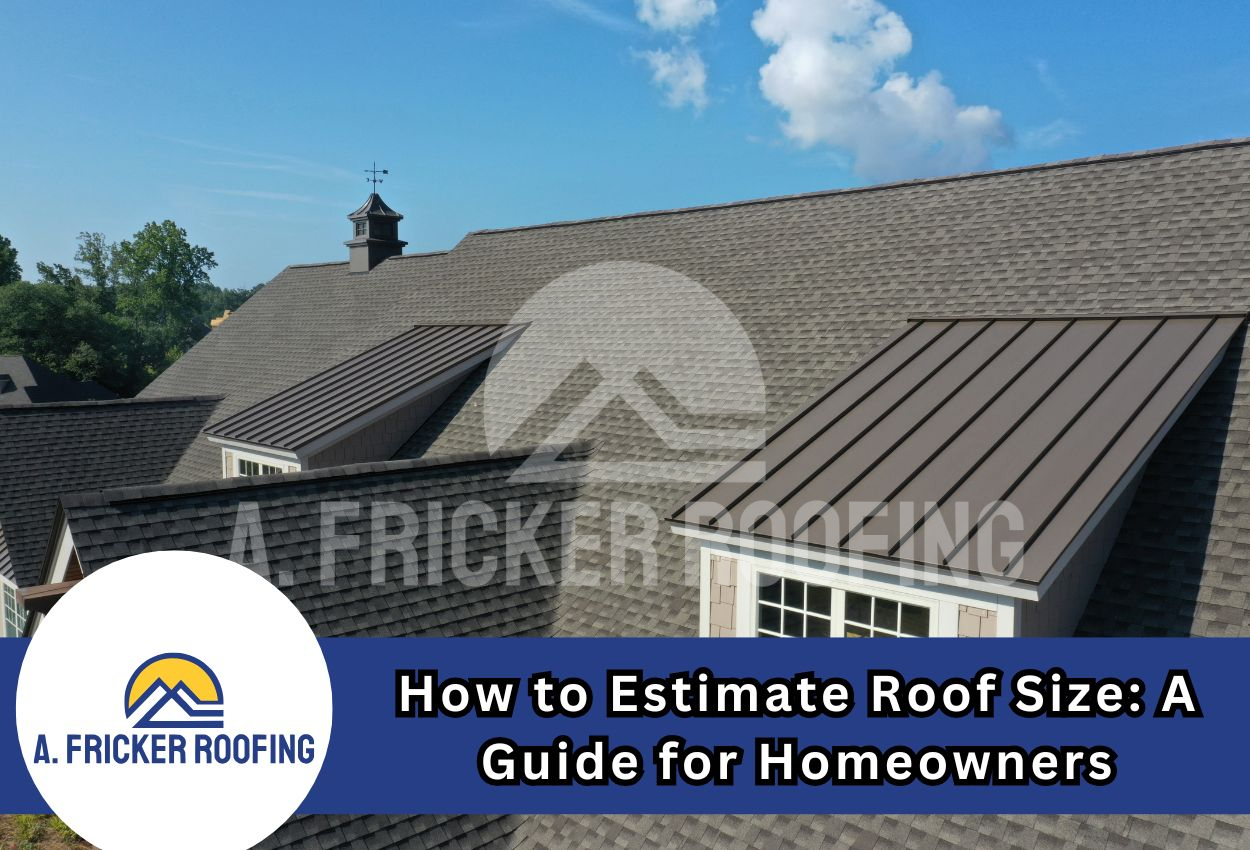When you’re thinking about replacing or installing a new roof, one of the first questions you’ll probably ask is: How big is my roof? Knowing your roof size is important to assess how much the replacement project will cost and how long it will take. It’s something you want to get right because mistakes during your project can be expensive.
At A. Fricker Roofing and Waterproofing, we help homeowners like you make better roofing decisions every day. Whether you’re comparing roofing options or planning for a full installation, here’s what you need to know about estimating your roof size accurately and efficiently.
Why Should You Be Aware Of Roof Size?

Finding the size of your roof is more than just calculating square footage, it’s about precision. If your estimate is too small, you risk running out of materials mid-job. Overshooting can lead to overpaying for materials you don’t need. Either way, it hits your budget and timeline.
Getting an accurate roof measurement also gives roofing professionals a head start in providing realistic quotes and planning the scope of the project. This is especially important for pitched roofs, where the angles and complexity vary.
Step-by-Step: How to Estimate Roof Size
Now you know what can go wrong if you do not estimate the roof size correctly. In this section, we will share a step-by-step guide on estimating roof size.
Start with the Footprint of Your Home
Grab a tape measure or pull up your home’s blueprints or property plan if you have them. Measure the length and width of your home. If your house is rectangular and has a simple gable roof, this is fairly straightforward.
For example:
Length: 50 feet
Width: 30 feet
Ground-level area: 50 x 30 = 1,500 square feet
But remember, this is just the base area. Finding the pitch of the roof is also very important.
Calculate The Roof Pitch
Roof pitch is the angle or steepness of your roof. Steeper roofs have more surface area than flat ones. To get an accurate roof size, you need to adjust for pitch.
Roof pitch is commonly given as a ratio (for example, 4:12), which means the roof rises 4 inches for every 12 inches of horizontal run. After you have calculated the pitch, it is time to use the roof pitch multiplier. This is a list of specific numbers associated with each pitch ratio. You need to multiply the square footage (found in step one) by the multiplier number associated. Here are some common pitch multipliers:
| Pitch | Multiplier |
| 3:12 | 1.03 |
| 4:12 | 1.05 |
| 5:12 | 1.08 |
| 6:12 | 1.12 |
| 7:12 | 1.16 |
| 8:12 | 1.20 |
| 9:12 | 1.25 |
| 10:12 | 1.30 |
So if your roof pitch is 6:12, and your base area is 1,500 square feet, then:
1,500 x 1.12 = 1,680 square feet of actual roof area (for one side of a simple gable)
Multiply that by two (for both sides), and you have 3,360 square feet.
Account for Roof Complexity
Is your roof a straightforward gable, or does it have hips, valleys, dormers, or intersecting sections? More complex shapes require a more detailed approach.
Break your roof into geometric shapes:
- Rectangles (main body of the roof)
- Triangles (gable ends)
- Trapezoids or odd shapes (dormers, extensions)
Measure or estimate the dimensions of each section and calculate its area. Then, total them up.
For complex roofs, we generally do not advise DIY calculations. If you’re unsure about complex angles, it’s time to call a professional roofing company. Even seasoned DIYers should bring in experts when roof geometry gets tricky.
Include Overhangs and Eaves
Don’t forget about roof overhangs. This is the length that extends beyond the walls of your home.
Most roofs extend by 12 to 24 inches on average. As you can see, this is not a small number. That extra square footage does add up.
To include overhangs:
Measure the overhang distance
Add it to each side’s width or length before calculating the roof area.
For instance, a 1-foot overhang on all sides of a 30-foot by 50-foot home becomes 32 feet by 52 feet.
32 x 52 = 1,664 square feet
Multiply by pitch adjustment and number of sides, as outlined above.
Add a Waste Factor
Once you have your estimated total, add a waste factor. For pitched roofs, 5% to 10% waste is typical, depending on the complexity of the roof and materials used.
For example:
Adjusted roof area: 3,000 square feet
Waste factor: 10%
Final estimated size: 3,300 square feet
This ensures you account for material cuts, overlaps, and installation mistakes.
How To Measure The Roof Size For Flat Roofs

Flat roofs are simpler to measure. Just measure the length and width of the entire surface, including overhangs, and you’ve got your square footage. Since there’s little to no pitch, no angle adjustments are needed. A small waste factor should still be included, 5% is usually enough.
How to Measure Roof Size Through Google Maps?
If you can’t access your roof or want a quick digital estimate, Google Maps is a handy tool. It can help you find the size of your roof through satellite.
Here’s how you can use it:
- Go to Google Maps and enter your home address.
- Switch to Satellite View for a top-down perspective.
- Right-click on your roof and choose “Measure distance.”
- Click along the edges of your roof to outline it.
Once you close the shape, Google will display the total area in square feet.
Keep in mind:
- It works best for simple roof shapes.
- It’s a bird’s-eye view, so it doesn’t account for pitch. You’ll still need to apply a pitch multiplier to get an accurate surface area.
- It won’t show overhangs clearly, so factor those in manually.
- It’s a great starting point for ballpark estimates and can help you have a more informed conversation when you bring in a contractor.
Tools That Can Help
Climbing on your roof with a tape measure is risky and is not a good idea for homeowners. Here are other options that can help you measure roof size:
Aerial Measurement Tools
There are services and apps that use satellite imagery or drone data to provide accurate roof measurements. Some are available to homeowners, others are used by professionals.
Roofing Calculators
Many reputable roofing manufacturers and contractors offer online calculators. Just plug in your home dimensions, pitch, and roof style to get an estimate.
Professional Inspections
Nothing beats the precision of a professional measurement. We offer detailed, free roof inspections that include a size estimate and materials recommendations.
Need Help? We’re a Call Away
Estimating your roof size isn’t rocket science, but it does take care and attention to detail. And if you’re investing in a new roof, getting it right is worth it.
A. Fricker Roofing and Waterproofing brings years of roofing experience to every job. From measuring your roof to helping you select the best materials, we’re here to make sure your project runs smoothly from start to finish.
Give us a call at (918) 402-7167 and schedule an inspection today.

